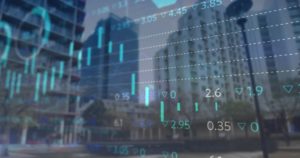Market Update 21st October 2025

Looking Smaller
I attended an event last week and one of the presenters was a global small cap manager. They talked more generally about global small caps as their fund hasn’t launched yet. But they highlighted something which I already knew but hadn’t quite appreciated. That is that the definition of a small cap varies hugely.
Before I expand too much, I want to give a bit of background into the global small cap market. Over the last decade the small cap market has underperformed the large cap market which is mostly due to the outperformance of technology and AI stocks. The outperformance has been stellar, most of the significant outperformance has come from 2023-2025. The MSCI ACWI has gone up 204% in the last 10years vs MSCI ACWI Small Cap at 146%. Anything below 10 years has a similar trend of the large caps outperforming.
Historically over a long period of time small caps have actually been the better investment. The performance for the MSCI ACWI on a 25year period is 517% vs MSCI ACWI Small Cap at 909%.
Inherently small cap indices face some greater headwinds. A frequently quoted number which floats around is that 42% of the Russell 2000 index is unprofitable, compared with only 6% in the S&P 500 and 14% in the Russell Mid cap index.
MSCI define small caps as companies with a market cap of $200mil-$1.5bn. I wouldn’t say this definition is kept to when constructing the indices. Currently the MSCI USA Small cap index has a largest constituent market cap size of $29bn and the smallest at $160mil. It’s not just the US which breaks the rules, the MSCI UK Small cap index has the largest constituent market cap size of $9.6bn and the smallest at $160mil.
The other way the indices often look at it is small cap cover the smallest 15% of the market (give or take). The next 15% is mid cap and then around 70% is large cap.
If you take this 15-15-70 approach the cut offs for various smaller companies globally varies drastically and could create some unintended biases and risks in the indices. In the US the market cap cut off for a smaller cap company would be $24bn compared with $7bn for the UK. Switzerland and France aren’t far behind the US with a cut off of $21bn and $19bn respectively. Whereas a country like Japan would have a cut off of $4bn to be a small cap.
I had a look at some of the MSCI individual countries small cap indexes and most of them are nowhere near this cut off. The only one which breaches the cut off is the US. However there are probably genuine reasons for this. The numbers given above are as at end of September, but rebalancing businesses out of the index will maybe happen once or twice a year depending on the index provider.
The average constituent market cap size in the US Small cap index is actually $3.5bn which is much more in line with what you would usually call small cap. The Switzerland small cap index average market cap size is $2.1bn, France is $1.5bn and the UK is $2.1bn.
There are times when passive indexes in portfolios can be useful and beneficial for performance and risk. For example, having a US tracker surrounded by a few US active funds which have different exposures might be a sensible approach.
Passive indices in small caps however, pose some different risks. Small cap active managers have been finding it difficult in recent years due to the underperformance of small vs large cap stocks. A general view that we hear a lot is that small caps have been producing good results but are just not being rewarded with the share price. So, fundamentals are strong and are actually looking like good value for investors..
Emily Cave – Research Analyst

Hawksmoor Investment Management Limited is authorised and regulated by the Financial Conduct Authority (www.fca.org.uk) with its registered office at 2nd Floor Stratus House, Emperor Way, Exeter Business Park, Exeter, Devon EX1 3QS. This document does not constitute an offer or invitation to any person in respect of the securities or funds described, nor should its content be interpreted as investment or tax advice for which you should consult your independent financial adviser and or accountant. The information and opinions it contains have been compiled or arrived at from sources believed to be reliable at the time and are given in good faith, but no representation is made as to their accuracy, completeness or correctness. The editorial content is the personal opinion of Emily Cave. Other opinions expressed in this document, whether in general or both on the performance of individual securities and in a wider economic context, represent the views of Hawksmoor at the time of preparation and may be subject to change. Past performance is not a guide to future performance. The value of an investment and any income from it can fall as well as rise as a result of market and currency fluctuations. You may not get back the amount you originally invested. Currency exchange rates may affect the value of investments. FPC25556.
View more news